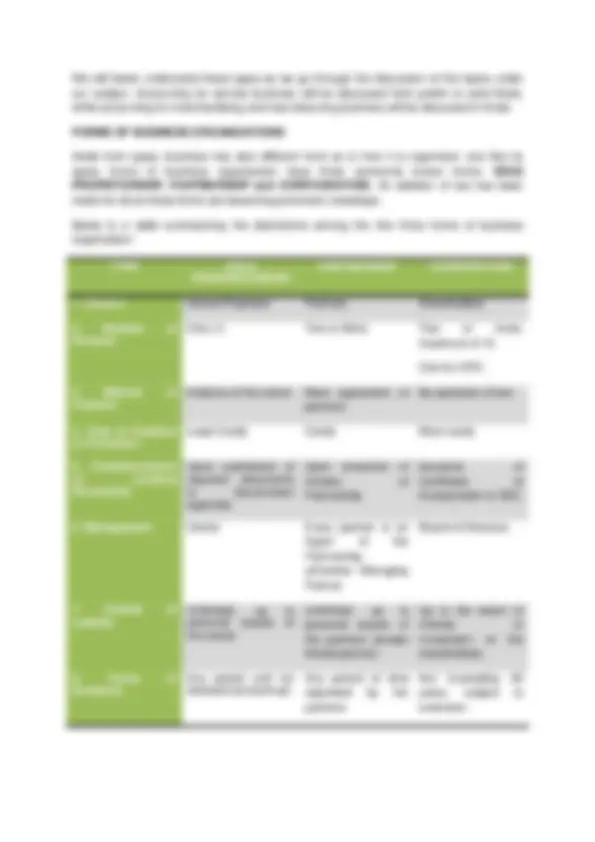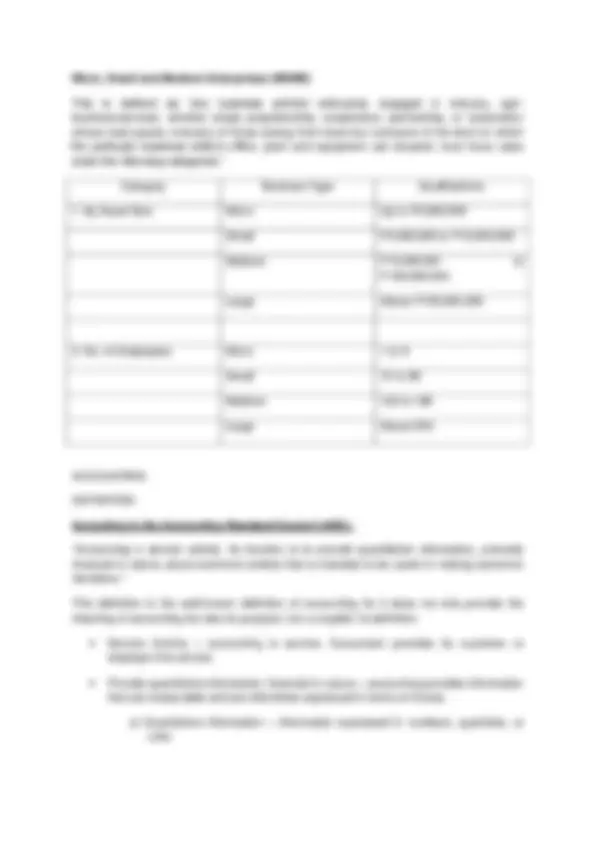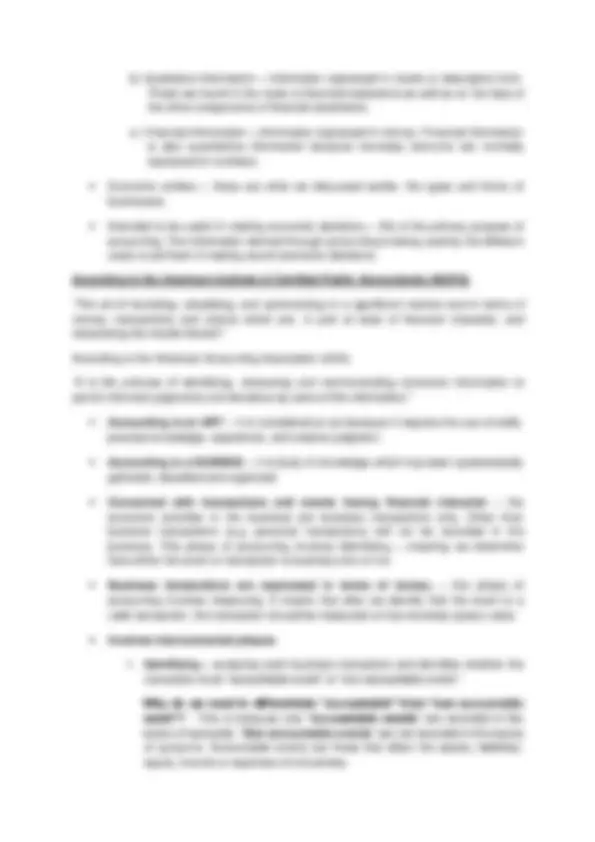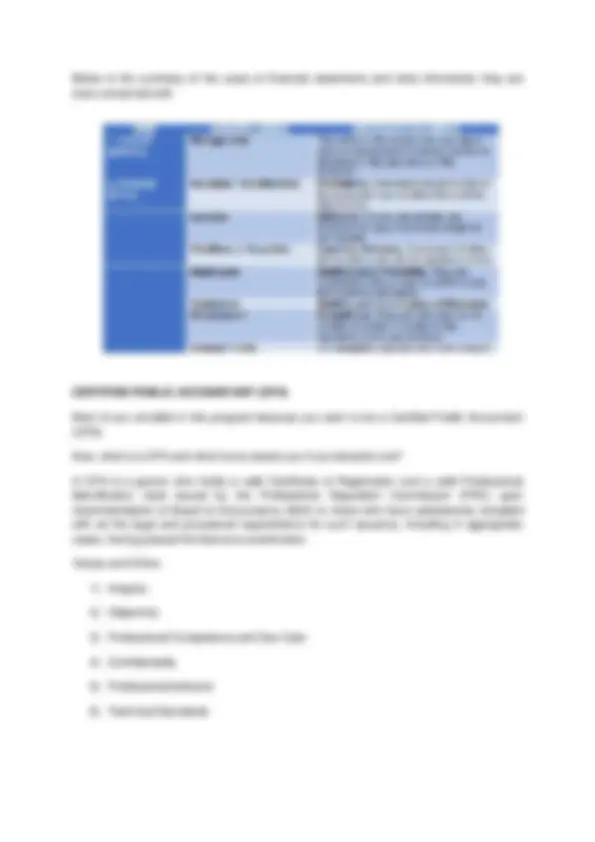







Study with the several resources on Docsity

Earn points by helping other students or get them with a premium plan


Prepare for your exams
Study with the several resources on Docsity

Earn points to download
Earn points by helping other students or get them with a premium plan
Community
Ask the community for help and clear up your study doubts
Discover the best universities in your country according to Docsity users
Free resources
Download our free guides on studying techniques, anxiety management strategies, and thesis advice from Docsity tutors
Accounting is an important aspect of business, as it deals with an organization’s finances. Accounting is said to be the “language of business” and we will determine the reason why it is called such through our discussion. Throughout the discussion, let us understand the function and the importance of accounting in business organizations.
Typology: Lecture notes
1 / 9

This page cannot be seen from the preview
Don't miss anything!






Accounting is an important aspect in business, as it deals with an organization’s finances. Accounting is said to be the “language of business” and we will determine the reason why it is called as such through our discussion. Throughout the discussion, let us understand the function and the importance of accounting in business organizations.
Oftentimes, accounting is connected to mathematics. Maybe, some of you have been recommended to this course because you are good in math. However, accounting is more than just numbers. It is indeed true that it involves mathematics, but it also dealt with comprehension and analysis.
Now, let us discuss what accounting really is.
At the end of this topic, students are expected to:
a. Understand the definition and purpose of accounting
b. Understand the differences among the types and forms of business organizations
c. Identify the accounting information and how it is used by the users of financial statements
d. Identify the branches and fields of accounting
DISCUSSION:
Before we proceed with the discussion, ask yourselves these questions first. What do you think of accounting? Since accounting is an integral part of a business. Let us define business first.
Business is a lawful economic activity that uses economic resources or inputs to provide goods or services to customers in exchange for money or other goods and services. A business uses its resources: money, materials, machineries, manpower to provide products or services.
The primary goal of a business is to MAXIMIZE its PROFIT through the aid of the different department such as sales, marketing, human resource, accounting, etc.
There are three types of business most commonly known : SERVICE, MERCHANSDISING AND MANUFACTURING. However, due to changes and adaptation of businesses in latest trends, an addition has been made.
Below is a table summarizing the definition and examples of these types of businesses.
TYPE DEFINITION EXAMPLES
Entities that provide intangible products (no physical form). These entities offer professional skills, expertise, advice, and the likes.
*Professional - Accountants, Lawyers, Physicians
*Non-professional – laundry shops, beauty salons, repair shops
Entities involving purchase of goods that are ready for sale and subsequently will be sold to the customers which is also known as “buy and sell” businesses.
Retailers or Wholesalers *Grocery Stores, Convenience Stores, and resellers
Entities involving purchase of raw materials and then processing it in their factories in order to produce a new product and then subsequently sold to the customers. The difference from merchandising is that manufacturing buys RAW materials and process it to become salable, whereas, merchandising buys product that is already salable.
Microsoft Corp.
Chevron Corp Ford Motor Co.
Apple Inc.
This is the business that has more than one type of business (e.g. partly merchandising, partly manufacturing).
Starbucks wherein they process coffee beverages but at the same time selling already salable products such as tumblers, bottled drinks, and mugs.
What is the difference among service, merchandising and manufacturing? Service deals with providing service to customers while remaining two provides products to its customers. Even though they both provide goods, merchandising and manufacturing business are different in the creation of their product. Merchandising is more of a buy-and-sell business. They sell the product as is, without making or modifying it. Manufacturing, on the other hand supervises the creation of the product, from converting it from raw materials to finished products.
Micro, Small and Medium Enterprises (MSME)
This is defined as “any business activity/ enterprise engaged in industry, agri- business/services, whether single proprietorship, cooperative, partnership, or corporation whose total assets, inclusive of those arising from loans but exclusive of the land on which the particular business entity’s office, plant and equipment are situated, must have value under the following categories:”
Category Business Type Qualifications
Small P3,000,000 to P15,000,
Medium P15,000,001 to P100,000,
Large Above P100,000,
Small 10 to 99
Medium 100 to 199
Large Above 200
According to the Accounting Standard Council (ASC),
“Accounting a service activity. Its function is to provide quantitative information, primarily financial in nature, about economic entities that is intended to be useful in making economic decisions.”
This definition is the well-known definition of accounting for it does not only provide the meaning of accounting but also its purpose. Let us explain its definition.
Service Activity – accounting is service. Accountant provides its customer or employer this service.
Provide quantitative information, financial in nature – accounting provides information that are measurable and are oftentimes expressed in terms of money
a) Quantitative Information – information expressed in numbers, quantities, or units
b) Qualitative Information – information expressed in words or descriptive form. These are found in the notes to financial statements as well as on the face of the other components of financial statements.
c) Financial Information – information expressed in money. Financial information is also quantitative information because monetary amounts are normally expressed in numbers.
Economic entities – these are what we discussed earlier: the types and forms of businesses.
Intended to be useful in making economic decisions – this is the primary purpose of accounting. The information derived through accounting is being used by the different users to aid them in making sound economic decisions.
According to the American Institute of Certified Public Accountants (AICPA)
“The art of recording, classifying, and summarizing in a significant manner and in terms of money, transactions and events which are, in part at least of financial character, and interpreting the results thereof.”
According to the American Accounting Association (AAA)
“It is the process of identifying, measuring and communicating economic information to permit informed judgments and decisions by users of the information.”
Accounting is an ART – it is considered an art because it requires the use of skills, practical knowledge, experience, and creative judgment.
Accounting is a SCIENCE – it is body of knowledge which has been systematically gathered, classified and organized.
Concerned with transactions and events having financial character – the economic activities in the business are business transactions only. Other than business transactions (e.g. personal transactions) will not be recorded in the business. This phase of accounting involves Identifying – meaning we determine here either the event or transaction is business one or not.
Business transactions are expressed in terms of money – this phase of accounting involves measuring. It means that after we identify that the event is a valid transaction; the transaction should be measured or has monetary (peso) value.
Involves interconnected phases
Why do we need to differentiate “accountable” from “non-accountable event”? - This is because only “accountable events ” are recorded in the books of accounts. “ Non-accountable events ” are not recorded in the books of accounts. Accountable events are those that affect the assets, liabilities, equity, income or expenses of a business.
Accounting information are those needed by the users in making economic decisions. These are derived from the Financial Statements. Users make their decision based on the information on these statements. Commonly, they seek for the following information:
I. Result of Operations – this indicates the performance of the business whether the entity has a profit or loss in certain period of time (month, year, etc.). This can be seen in the reports: Statement of Comprehensive Income or Income Statement. In this report, profit or loss can be determined by deducting the expenses from the revenue.
II. Financial Position – this indicates the resources and the obligations of the entity. This can be seen in the reports: Statement of Financial Position or Balance Sheet. In this report, we will observe the accounting equation that Assets is equal to the sum of Liabilities and Capital (A = L + C). The following terms can be analyzed from this report:
a. Solvency – refers to the entity’s ability to pay obligations when they become due.
b. Liquidity – pertains to its ability to meet short-term obligations
III. Cash Flows – this involves the report: Statement of Cash Flows. In this report, it shows all transactions involving cash (inflows and outflows) from different activities of the entity such as operating, investing, and financing. A separate report is being made for cash since this is the most used resources of the entity, hence, should be analyzed.
USERS OF FINANCIAL STATEMENTS:
Financial statements are often called general purpose financial statements because they are being used by a wide-range of users. These users are classified into two components: Internal and External Users.
How can we know if a user is an external or internal user?
Below is the summary of the users of financial statements and what information they are most concerned with.
Most of you enrolled in this program because you want to be a Certified Public Accountant (CPA).
Now, what is a CPA and what future awaits you if you became one?
A CPA is a person who holds a valid Certificate of Registration and a valid Professional Identification Card issued by the Professional Regulation Commission (PRC) upon recommendation of Board of Accountancy (BoA) to those who have satisfactorily complied with all the legal and procedural requirements for such issuance, including in appropriate cases, having passed the licensure examination.
Values and Ethics
Integrity
Objectivity
Professional Competence and Due Care
Confidentiality
Professional behavior
Technical Standards